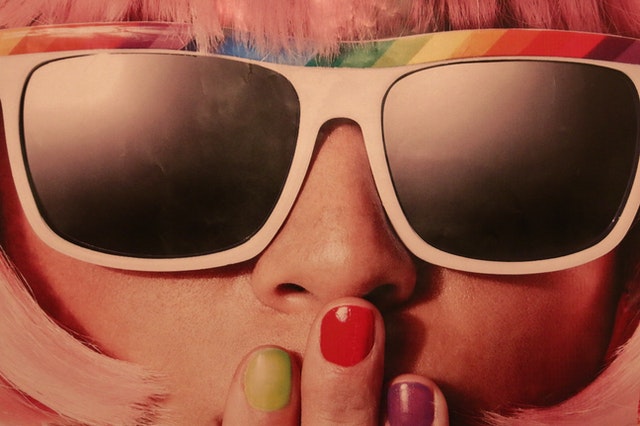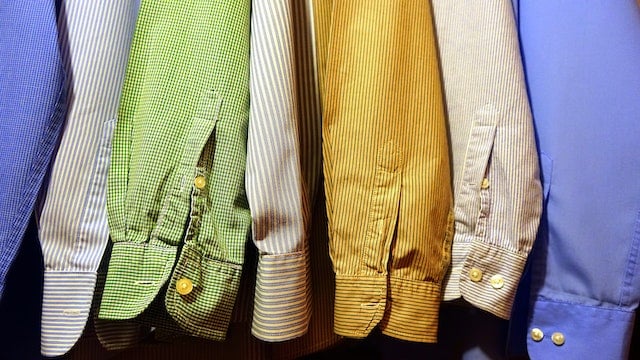Fashion trends are constantly evolving, and it can be hard to keep up with the latest styles. But fear not, as we’ve compiled a comprehensive guide to help you stay ahead of the game. Whether you’re looking for bold prints, statement accessories, or classic staples, we’ve got you covered with the hottest fashion trends for every season.
Table of Contents
Top Fashion Trends for Every Season
Spring Trends: Pastels, Florals, and Bold Prints.

Spring is all about fresh starts and new beginnings, and the fashion trends for this season reflect that. Pastel colors, florals, and bold prints are all in style, so don’t be afraid to mix and match. Whether you’re looking for a flowy maxi dress or a tailored blazer, incorporating these trends into your wardrobe will keep you on-trend and stylish all season long. Don’t forget to accessorize with statement jewelry and a cute pair of sandals to complete your look.
Summer Trends: Bright Colors, Statement Accessories, and Beachwear.

Summer is the perfect time to experiment with bold colors and statement accessories. Bright yellows, pinks, and oranges are all on-trend this season, so don’t be afraid to add a pop of color to your wardrobe. Statement earrings and necklaces are also a must-have accessory for summer, adding a touch of glamour to any outfit. And of course, no summer wardrobe is complete without some beachwear. From flowy cover-ups to stylish swimsuits, make sure you’re ready for any beach day or pool party.
Fall Trends: Cozy Knits, Animal Prints, and Earth Tones.

As the weather cools down, it’s time to start thinking about fall fashion trends. Cozy knits are a staple for the season, whether it’s a chunky sweater or a cardigan. Animal prints are also making a comeback, from leopard print to snakeskin. And earth tones like olive green, rust, and mustard yellow are perfect for creating a warm and cozy fall look. Don’t forget to accessorize with a statement scarf or hat to complete your outfit.
Winter Trends: Faux Fur, Metallics, and Layering.

Winter fashion is all about staying warm while still looking stylish. Faux fur is a popular trend for both jackets and accessories, adding a touch of luxury to any outfit. Metallics are also making a statement this season, from silver boots to gold statement jewelry. And layering is key to staying warm and fashionable, with oversized sweaters and jackets paired with scarves and hats. Don’t be afraid to mix and match textures and patterns for a bold winter look.
Year-Round Trends: Sustainable Fashion, Athleisure, and Classic Pieces.



While seasonal trends come and go, there are some fashion trends that are here to stay. Sustainable fashion, which focuses on environmentally-friendly and ethical production methods, is becoming increasingly popular as consumers become more conscious of their impact on the planet. Athleisure, the trend of wearing athletic clothing as everyday wear, is also still going strong. And classic pieces, like a well-tailored blazer or a little black dress, will always be in style. Investing in these timeless pieces is a smart way to build a versatile and sustainable wardrobe.
Top Fashion Trends in the Top Countries of the World

Fashion trends can vary significantly from one country to another, as each culture has its own unique sense of style and influences. Here are some fashion trends associated with 10 countries known for their fashion industries or distinctive fashion scenes:
United States
The U.S. fashion scene is diverse and varied, with trends ranging from casual and sporty streetwear to designer labels. Athleisure, denim, oversized silhouettes, and a mix of high and low fashion are prominent.
France
France is known for its chic and sophisticated style. Paris, in particular, is a fashion capital. French fashion trends often include tailored pieces, classic silhouettes, Breton stripes, elegant accessories, and an emphasis on quality and craftsmanship.
Italy
Italian fashion is renowned for its luxury and craftsmanship. Italy is home to prestigious fashion houses and is known for its impeccable tailoring, high-quality fabrics, and a blend of traditional and modern styles. Italy sets trends in luxury fashion, footwear, and accessories.
United Kingdom
The UK fashion scene is diverse and innovative. London is a hub for emerging designers and avant-garde fashion. British trends often include a mix of classic and punk elements, streetwear influences, vintage pieces, and an emphasis on individuality and subcultures.
Japan
Japan is known for its cutting-edge and unique fashion trends. From avant-garde street fashion in Harajuku to minimalistic and elegant styles, Japanese fashion often combines traditional and modern elements, with a focus on experimentation, functionality, and attention to detail.
South Korea
Korean fashion has gained international recognition in recent years. K-pop and Korean drama influences have contributed to the rise of “K-fashion.” Korean trends often include a mix of streetwear, vibrant colors, oversized silhouettes, and innovative styling.
Brazil
Brazil is known for its vibrant and colorful fashion scene. Brazilian fashion trends often feature bold prints, tropical influences, swimwear, and a celebration of body positivity. Brazilian designers excel in resort wear and beach fashion.
India
Indian fashion is diverse, reflecting the country’s rich cultural heritage. Traditional clothing like sarees and salwar kameez coexist with modern designs. India is known for intricate textiles, vibrant colors, and elaborate embellishments. Ethnic fusion and sustainable fashion are also emerging trends.
Australia
Australian fashion is influenced by its laid-back lifestyle and love for the outdoors. Australian trends often include relaxed, casual wear, beachwear, athleisure, and sustainable fashion. Australian designers are known for their eco-friendly and ethical practices.
Sweden
Swedish fashion trends often prioritize simplicity, minimalism, and functionality. Scandinavian style is characterized by clean lines, neutral colors, and a focus on sustainable and ethical fashion. Swedish designers excel in minimalist and contemporary designs.
It’s important to note that these trends are generalized and can evolve over time. Fashion is a dynamic and ever-changing industry, and individual style preferences can vary within each country.
The Decline of the Fashion Industry: What’s Causing It?
The Future of Fashion: Predictions for 2023 and Beyond

The fashion industry has been facing a decline in recent years due to various factors. One of the main reasons is the changing consumer behavior, where people are now seeking more sustainable, ethical, and personalized fashion options. This has led to a decrease in demand for fast fashion and an increase in interest for slow fashion, vintage clothing, and sustainable brands. The rise of e-commerce has also disrupted traditional brick-and-mortar retail, resulting in store closures and reduced foot traffic in physical stores. The COVID-19 pandemic has further impacted the industry, leading to a significant decline in sales and disrupting fashion events and retail spaces. Overproduction and waste, lack of diversity and inclusivity, economic factors, and sustainability and ethical concerns have also contributed to the decline. However, many brands are now embracing sustainability and ethical practices, innovating to meet changing demands, and shifting towards more responsible and inclusive practices. The decline in certain aspects of the fashion industry can be seen as an opportunity for positive change.
The Future of Fashion: Adapting to Changing Consumer Behaviors in 2023

Hirav Shah, a renowned business strategist, predicts that the fashion industry will face challenges in the coming years due to unpredictable consumer behavior. To adapt to reduced spending, brands may need to explore rental channels and off-price retailers, but must do so carefully to protect their margins and reputation. Furthermore, fashion brands must update their design and merchandising strategies to reflect changing attitudes towards gender lines and dress codes. As office attire becomes more casual, special-occasion dress will become bolder. These changes will require careful planning and execution to stay ahead in the competitive fashion industry.
The Intersection of Astrology and Fashion

Fashion trends vary from country to country, and many factors can influence them. One such factor is astrology, which can impact an individual’s fashion choices. Hirav Shah, a well-known astrologer and fashion consultant, believes that astrology and fashion can intersect in many ways. He suggests that astrology can influence an individual’s sense of style and fashion choices, taking into account various astrological factors such as birth chart, zodiac sign, and planetary positions.
Zodiac Sign Style: Astrology enthusiasts often associate specific fashion styles with each zodiac sign. For example, bold and vibrant outfits might be associated with extroverted and fiery signs like Leo or Aries, while earthy and bohemian aesthetics may be linked to grounded signs like Taurus or Virgo. However, these associations are subjective and based on general astrological traits.
Color Choices: Astrology connects certain colors to different zodiac signs. These color associations can guide individuals in choosing clothing items or accessories that align with their zodiac sign. For instance, individuals with a dominant Aquarius influence might be drawn to shades of blue and silver.
Despite the challenges faced by the fashion industry, there is a great opportunity for growth and transformation. Hirav Shah, a renowned business strategist and astrologer, believes that by embracing sustainable and ethical practices, the industry can overcome its obstacles. With changing consumer behavior and a rise in demand for personalized and sustainable fashion options, brands have the chance to adapt and thrive. The COVID-19 pandemic has also highlighted the need for digital transformation and innovation in the industry. By addressing issues such as overproduction, lack of diversity and inclusivity, and ethical concerns, the fashion industry can create positive change and a more responsible future. Hirav Shah sees a bright future for the industry and encourages brands to seize this opportunity for growth and transformation.
Final Words

Despite the uncertain and tenuous outlook for the global fashion industry in 2023, Hirav Shah sees a great opportunity for those who are willing to make strategic sacrifices and invest in agility and creativity. While customers may be reigning in their budgets and growth has slowed in China, there is still potential for success in the luxury and sportswear sectors. With an energy crisis disrupting European economies, decision makers in the industry will need to be prepared to adapt and innovate in order to thrive when the market eventually recovers.










